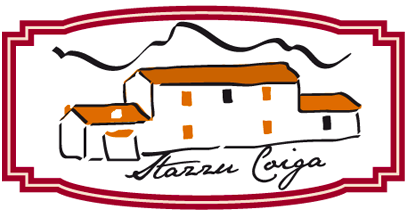


Nome Italiano: Efedra
Nome scientifico: Ephedra distachya L. subsp. distachya
Nome Gallurese: Erva ‘e ‘entu nodos
Descrizione:
L’Efedra è una pianta cespugliosa di altezza variabile tra i 30 cm e 2 m. I rami sono sottili e nodosi, di colore verde opaco e presentano solchi verticali. Le foglie sono squamose di colore verde grigiastro. Come tutte le Gimnosperme non ha fiori (come generalmente li intendiamo) ma strobili che possono essere maschili o femminili in infiorescenze ermafrodite. Il frutto è un falso frutto, che può diventare carnoso e colorato di rosso, dolce e commestibile. In Sardegna è presente nei Supramonte della Barbagia.
Le Ephedraceae contengono tannini, mucillagini e principalmente un alcaloide stimolante, l’efedrina. Le proprietà della pianta sono già note da millenni e vengono utilizzate nel trattamento di asma e bronchite. L’efedrina agisce soprattutto sul sistema respiratorio, cardiovascolare e ormonale che, aumentando la frequenza della respirazione, provoca la dilatazione dei bronchi e quindi favorisce l’espettorazione ed aumenta il tono muscolare. Talvolta viene utilizzata anche in infusione come una bevanda stimolante ed eccitante. Le parti aeree della pianta contengono alcaloidi della molecola simile all’adrenalina, ma dall’effetto più durevole. Il suo principio attivo viene impiegato nel trattamento dei cardiopatici, come vasocostrittori.
L’Efedra è un tonico del sistema neuromuscolare per potenziare il rendimento degli sportivi (è considerata, infatti, sostanza dopante). Attualmente viene monitorata dal Ministero della Salute per i gravi effetti avversi provocati in alcuni pazienti.

Italian name: Efedra
Scientific name: Ephedra distachya L. subsp. distachya
Gallurese name: Erva ‘e ‘entu nodos
Description:
Ephedra is a bushy plant varying in height between 30 cm and 2 m. The branches are thin and gnarled, dull green in colour and have vertical furrows. The leaves are greyish green and scaly. Like all Gymnosperms, it has no flowers (as we generally understand them) but strobili that can be male or female in hermaphrodite inflorescences. The fruit is a false fruit, which can become fleshy and coloured red, sweet and edible. In Sardinia, it is found in the Supramonte of Barbagia.
The Ephedraceae contain tannins, mucilage and mainly a stimulating alkaloid, ephedrine. The plant’s properties have been known for thousands of years and are used in the treatment of asthma and bronchitis. Ephedrine acts mainly on the respiratory, cardiovascular and hormonal systems, which, by increasing the frequency of breathing, causes the bronchi to dilate and thus promotes expectoration and increases muscle tone. It is also sometimes used in infusions as a stimulating and exciting drink. The aerial parts of the plant contain alkaloids of the molecule similar to adrenalin, but with a longer-lasting effect. Its active ingredient is used in the treatment of heart patients as a vasoconstrictor.
Ephedra is a tonic for the neuromuscular system to boost the performance of sportsmen and women (it is in fact considered a doping substance). It is currently being monitored by the Ministry of Health for serious adverse effects in some patients.
